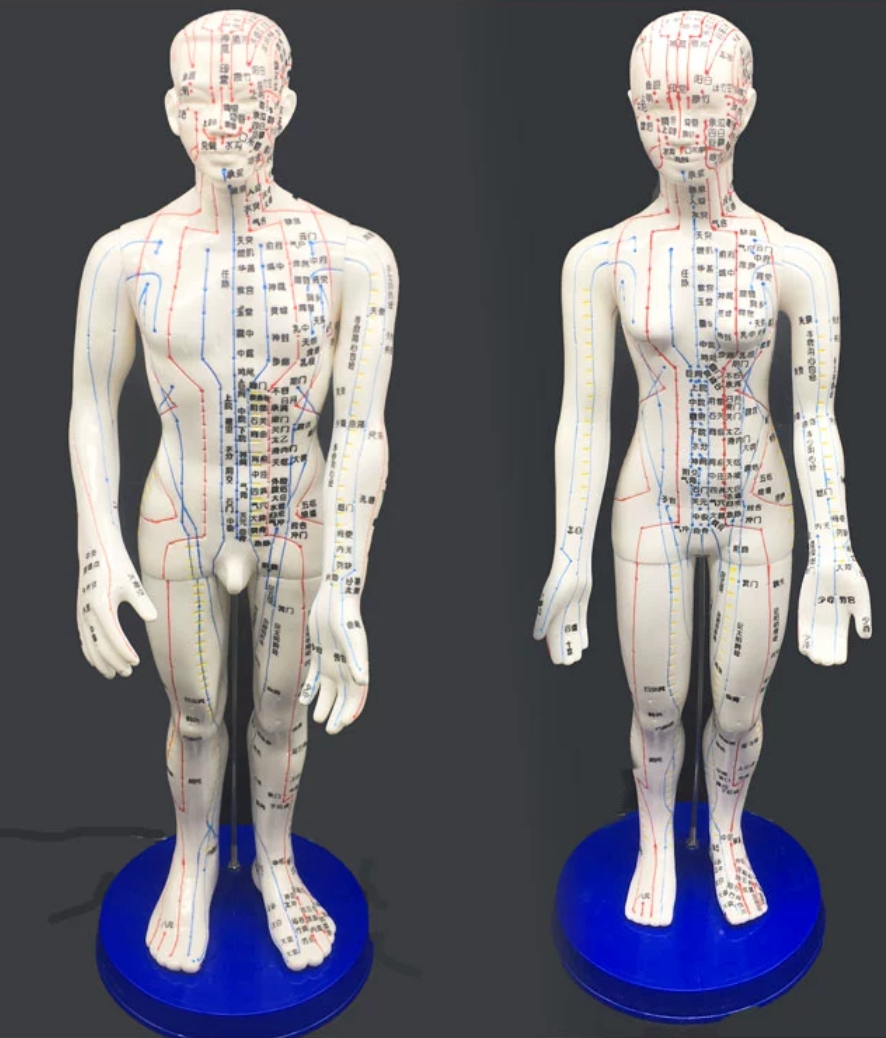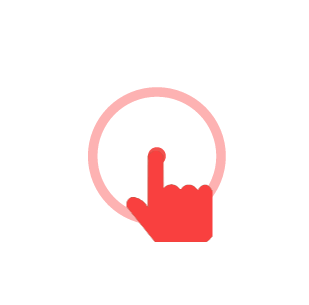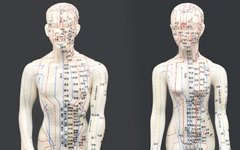The meridians, which encompass both the primary channels and the collateral channels, serve as the pathways for the circulation of Qi and blood throughout the body, connecting the organs and tissues, facilitating communication between the internal and external environments, and transmitting information. They are a vital component of the body’s structural organization.The meridians are divided into two main categories: primary channels and collateral channels. The term “primary” (经, jīng) refers to pathways or routes.The primary channels are the main pathways within the meridian system.The term “collateral” (络, luò) refers to connections or networks.The collateral channels are the superficial branches of the primary channels, intricately connecting and spreading throughout the body.Primary channels are generally deeper and not visible, running between the muscles, while collateral channels are more superficial and often visible, running along the surface of the body; primary channels are larger, while collateral channels are smaller.Primary channels primarily run longitudinally, while collateral channels intersect in a network throughout the body.Although there are distinctions between primary and collateral channels, they are closely interconnected, together forming the meridian system of the body, responsible for the circulation of Qi and blood, and communication, linking the five zang organs, six fu organs, limbs, and skin into an organic whole.The theory of meridians studies the concepts, pathways, physiological functions, pathological changes of the meridians, and their interconnections with the organs and tissues, forming a foundational theory of Traditional Chinese Medicine (TCM) dietary therapy.The theory of meridians originated from the ancient observations of phenomena related to meridians during health maintenance or treatment methods such as acupuncture, qigong, and massage, as well as the pathological conditions observed in meridian-related diseases. This accumulated rich experience, combined with the anatomical knowledge of the time and the influence of ancient philosophy, gradually evolved into a theoretical framework, thus forming the theory of meridians.The theory of meridians runs through all aspects of studying human physiology, pathology, and disease diagnosis and prevention, complementing foundational theories such as zangxiang (organ representation), Qi, blood, and body fluids, and providing important guidance for acupuncture, massage, qigong, and other clinical disciplines.The composition of the meridian systemThe meridian system consists of primary channels, collateral channels, and their associated parts.The primary channels are the main pathways, primarily categorized into the twelve regular channels, twelve divergent channels, and eight extraordinary vessels. The collateral channels are branches of the primary channels, including the divergent collaterals, superficial collaterals, and subsidiary collaterals. The associated parts connect internally to the various zang and fu organs and externally to the muscles and skin, referred to as the sinews and skin areas.The sinews are the system where the Qi of the twelve primary channels “gathers, collects, disperses, and connects” in the muscles and joints, serving as an accessory part of the twelve primary channels, linking the body and maintaining the connection throughout, primarily governing joint movement. The skin areas are the locations where the functional activities of the twelve primary channels are reflected on the body surface, and they are also where the Qi of the collateral channels is distributed.

(1) The Twelve Primary Channels
The twelve primary channels consist of the three yin channels of the hand (Taiyin Lung Channel, Jueyin Pericardium Channel, Shaoyin Heart Channel), the three yang channels of the hand (Yangming Large Intestine Channel, Shaoyang Sanjiao Channel, Taiyang Small Intestine Channel), the three yin channels of the foot (Taiyin Spleen Channel, Jueyin Liver Channel, Shaoyin Kidney Channel), and the three yang channels of the foot (Yangming Stomach Channel, Shaoyang Gallbladder Channel, Taiyang Bladder Channel).The twelve primary channels are the main body of the meridian system and serve as the primary pathways for the circulation of Qi and blood, hence they are also referred to as the “regular channels” or “twelve regular channels.”
1. Naming Principles The twelve primary channels are symmetrically distributed on both sides of the body, running along the inner or outer sides of the upper or lower limbs. Each channel is associated with a specific zang or fu organ. Therefore, the naming principles of the twelve primary channels include yin and yang, zang and fu.
Channels running along the upper limbs, starting or ending at the hands, are called “hand channels”; those running along the lower limbs, starting or ending at the feet, are called “foot channels.” Channels distributed on the inner sides of the limbs are classified as “yin channels”; those on the outer sides are classified as “yang channels.” Yin channels are associated with the zang organs, while yang channels are associated with the fu organs. According to the tripartite division of yin and yang, one yin is divided into three yin: Taiyin, Jueyin, and Shaoyin; one yang is divided into three yang: Yangming, Shaoyang, and Taiyang. Among the three zang organs in the chest, the lung is Taiyin, the pericardium is Jueyin, and the heart is Shaoyin, with their channels running along the upper limbs. Thus, the lung channel is called the Hand Taiyin Channel, the pericardium channel is called the Hand Jueyin Channel, and the heart channel is called the Hand Shaoyin Channel, distributed along the inner sides of the upper limbs in the front, middle, and back lines respectively; corresponding to these three zang organs, the large intestine, sanjiao, and small intestine belong to Yangming, Shaoyang, and Taiyang, with their channels called the Hand Yangming Channel, Hand Shaoyang Channel, and Hand Taiyang Channel, distributed along the outer sides of the upper limbs in the front, middle, and back lines respectively. Among the three zang organs in the abdomen, the spleen is Taiyin, the liver is Jueyin, and the kidney is Shaoyin, with their channels running along the lower limbs, thus called the Foot Taiyin Channel, Foot Jueyin Channel, and Foot Shaoyin Channel, distributed along the inner sides of the lower limbs in the front, middle, and back lines respectively (in the lower half of the calf, the Foot Jueyin Channel is at the front edge, and the Foot Taiyin Channel is at the midline); corresponding to these three zang organs, the stomach, gallbladder, and bladder belong to Yangming, Shaoyang, and Taiyang, with their channels called the Foot Yangming Channel, Foot Shaoyang Channel, and Foot Taiyang Channel, distributed along the outer sides of the lower limbs in the front, middle, and back lines respectively.
2. Surface Distribution Patterns of the Twelve Primary Channels The twelve primary channels are distributed in the chest, abdomen, waist, back, head, face, and limbs. Except for the left and right hand Yangming Large Intestine Channels that cross to the opposite side of the head and face, the other same-named channels on the left and right sides generally do not cross to the opposite side. The twelve primary channels have different distribution patterns at various body surface locations.
(1) Head and Face The three yang channels of the hand terminate at the head and face, while the three yang channels of the foot originate from the head and face, thus the hand and foot yang channels converge at the head and face, leading to the saying “the head is the meeting point of all yang channels.” The hand and foot Yangming channels run along the forehead, the hand and foot Shaoyang channels run along the sides of the head, the hand Taiyang channel is distributed on the cheeks, and the foot Taiyang channel is distributed on the top and back of the head. Additionally, some yin channels or their branches reach the head and face, such as branches of the Hand Shaoyin Heart Channel, the Foot Jueyin Liver Channel reaching the eyes, the Foot Jueyin Liver Channel intersecting with the Governing Vessel at the top of the head, branches of the Foot Shaoyin Kidney Channel reaching the root of the tongue, and the Foot Taiyin Spleen Channel connecting to the base of the tongue and spreading beneath it.
(2) Limbs In the upper and lower limbs, the general pattern is that Taiyin and Yangming are at the front, Jueyin and Shaoyang are in the middle, and Shaoyin and Taiyang are at the back. However, below 8 cun above the inner ankle in the lower limb, the arrangement of the three yin channels of the foot is: Foot Jueyin at the front, Foot Taiyin in the middle, and Foot Shaoyin at the back.
(3) Trunk In the chest and abdomen, the order from the midline outward is: Foot Shaoyin, Foot Yangming, Foot Taiyin, Foot Jueyin; the lateral waist area is the Foot Shaoyang; the lower back and back area is the Foot Taiyang.
3. Exterior-Interior Relationship The three yin and three yang channels of the hands and feet communicate with each other through their respective divergent channels and collateral channels, forming six pairs of exterior-interior relationships. As stated in the “Su Wen: Blood and Qi Form and Spirit,” “the Foot Taiyang and Shaoyin are exterior-interior, Shaoyang and Jueyin are exterior-interior, Yangming and Taiyin are exterior-interior, thus forming the foot yin and yang. The Hand Taiyang and Shaoyin are exterior-interior, Shaoyang and the heart master are exterior-interior, Yangming and Taiyin are exterior-interior, thus forming the hand yin and yang.” The exterior-interior relationships of the twelve primary channels not only strengthen the connections and communications between the exterior and interior channels but also promote the physiological coordination and cooperation between the corresponding zang and fu organs.
4. Pathway and Intersection Patterns
(1) Pathway and Intersection The pathway and intersection patterns of the twelve primary channels are clearly discussed in the “Ling Shu: Reverse and Order of Fat and Thin”: “The three yin channels of the hand run from the zang to the hand; the three yang channels of the hand run from the hand to the head; the three yang channels of the foot run from the head to the foot; the three yin channels of the foot run from the foot to the abdomen.” This indicates that the three yin channels of the hand run from the internal organs in the thoracic cavity to the fingertips, intersecting with the three yang channels of the hand; the three yang channels of the hand run from the fingertips to the head and face, intersecting with the three yang channels of the foot; the three yang channels of the foot run from the head and face to the toes, intersecting with the three yin channels of the foot; the three yin channels of the foot run from the toes to the abdomen and chest, intersecting with the three yin channels of the hand in the thoracic cavity. Thus, the hand channels intersect at the hands, the foot channels intersect at the feet, the yang channels intersect at the head, and the yin channels intersect at the internal organs of the chest and abdomen, allowing the twelve primary channels to be “interconnected in yin and yang, like a ring without end” (“Ling Shu: Nutritional Health Meeting”).
(2) Intersection Points The intersection points of the twelve primary channels have certain regularities. The exterior-interior yin and yang channels intersect at the extremities of the limbs: first, the exterior-interior hand three yin channels and hand three yang channels intersect at the extremities of the upper limbs (fingers), while the exterior-interior foot three yin channels and foot three yang channels intersect at the extremities of the lower limbs (toes). For example, the Hand Taiyin Lung Channel and Hand Yangming Large Intestine Channel intersect at the index finger, the Hand Shaoyin Heart Channel and Hand Taiyang Small Intestine Channel intersect at the little finger, the Hand Jueyin Pericardium Channel and Hand Shaoyang Sanjiao Channel intersect at the ring finger, the Foot Yangming Stomach Channel and Foot Taiyin Spleen Channel intersect at the big toe, the Foot Taiyang Bladder Channel and Foot Shaoyin Kidney Channel intersect at the little toe, and the Foot Shaoyang Gallbladder Channel and Foot Jueyin Liver Channel intersect behind the big toe nail. Secondly, the same-named hand and foot yang channels intersect at the head and face; since the three yang channels of the hand terminate at the head, and the three yang channels of the foot originate from the head, the hand and foot yang channels intersect at the head and face, leading to the saying “the head is the meeting point of all yang channels.” Lastly, the hand three yin channels and foot three yin channels intersect in the chest and abdomen, with the Foot Taiyin Spleen Channel and Hand Shaoyin Heart Channel intersecting at the heart; the Foot Shaoyin Kidney Channel and Hand Jueyin Pericardium Channel intersect at the chest; the Foot Jueyin Liver Channel and Hand Taiyin Lung Channel intersect at the lung.
5.Qi and Blood Flow Patterns The twelve primary channels are the main pathways for the circulation of Qi and blood, connecting end to end in a continuous loop, like a ring without end. Since all Qi and blood are transformed from the essence of food and water processed by the spleen and stomach, the flow of Qi and blood in the twelve primary channels begins with the Hand Taiyin Lung Channel originating from the middle jiao, sequentially flowing through each channel, ultimately reaching the Foot Jueyin Liver Channel, and then returning to the Hand Taiyin Lung Channel to enter the next cycle. The flow sequence of the twelve primary channels is as follows:

– Recommended Articles –
Dietary Therapy Methods
Concepts of TCM Dietary Therapy
Characteristics of TCM Dietary Therapy
Qin Bowei on Disease Causes (Part 1)
The Five Zang Organs and the Theory of Zangxiang in TCM

Click to view

